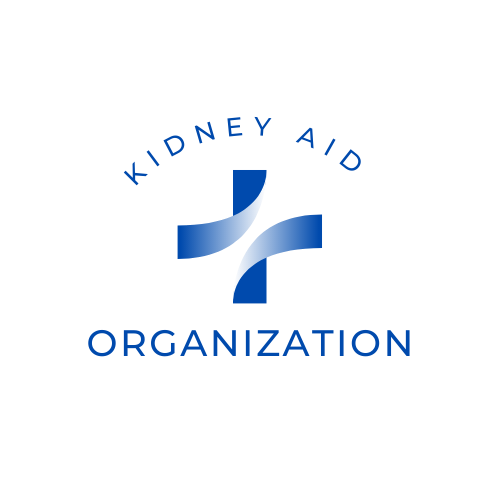An In-Depth Guide: Telemedicine for Stage 4 Kidney Disease Management
Stage 4 Chronic Kidney Disease (CKD) signifies a significant decline in kidney function, bringing with it a complex array of symptoms, strict dietary and medication regimens, and the looming prospect of dialysis or transplant. For patients grappling with this advanced stage, accessible, consistent, and personalized care is paramount. This is where telemedicine emerges as a transformative solution, offering a new paradigm for managing stage 4 CKD.
This comprehensive guide will explore the multifaceted benefits, practical applications, potential challenges, and best practices of leveraging telemedicine for stage 4 kidney disease management.
Understanding Stage 4 CKD and Its Management Needs
Stage 4 CKD is characterized by a glomerular filtration rate (GFR) between 15 and 29 mL/min. At this stage, symptoms like fatigue, swelling, nausea, and changes in urination become more pronounced. Managing stage 4 CKD involves:
- Slowing Disease Progression: Aggressive management of underlying conditions like hypertension and diabetes is crucial to preserve remaining kidney function.
- Symptom Management: Addressing symptoms such as anemia, bone disease, and fluid overload.
- Nutritional Guidance: Strict dietary restrictions (e.g., low sodium, potassium, phosphorus) are often necessary.
- Medication Management: A complex medication regimen to control blood pressure, blood sugar, and other complications.
- Preparation for Renal Replacement Therapy: Discussing and preparing for dialysis (hemodialysis or peritoneal dialysis) or kidney transplant as the disease progresses to End-Stage Renal Disease (ESRD).
- Psychological Support: Dealing with the emotional and mental burden of a chronic, progressive illness.
Traditional in-person care for stage 4 CKD can be demanding, involving frequent clinic visits, lab tests, and specialist appointments, often proving challenging for patients with reduced mobility, rural residency, or compromised health.
The Rise of Telemedicine in CKD Care
Telemedicine, or telehealth, utilizes digital information and communication technologies to deliver healthcare services remotely. For stage 4 CKD patients, this encompasses:
- Teleconsultations: Virtual appointments with nephrologists, dietitians, nurses, and other specialists via video conferencing or phone calls.
- Remote Patient Monitoring (RPM): Using connected devices to transmit vital signs (blood pressure, weight, blood glucose), lab results, and symptom data from the patient's home to their care team.
- Mobile Health (mHealth) Applications: Apps providing medication reminders, dietary tracking, educational resources, and symptom logs.
- Digital Platforms: Secure online portals for communication, appointment scheduling, and accessing health records.
The COVID-19 pandemic significantly accelerated the adoption of telemedicine, highlighting its critical role in ensuring continuity of care, especially for vulnerable populations like those with advanced CKD.
Benefits of Telemedicine for Stage 4 CKD Management
Telemedicine offers a multitude of advantages for both patients and healthcare providers in managing stage 4 CKD:
Enhanced Accessibility and Convenience:
- Reduced Travel Burden: Eliminates the need for frequent, often exhausting, trips to clinics, especially beneficial for patients with limited mobility, transportation issues, or those living in rural or remote areas.
- Flexible Scheduling: Offers greater flexibility in appointment times, making it easier to integrate care into daily life and reduce time off work or other commitments.
- Improved Access to Specialists: Connects patients with specialized nephrology care and multidisciplinary teams (dietitians, social workers, transplant coordinators) who may not be readily available locally.
Improved Monitoring and Timely Interventions:
- Real-time Data Collection (RPM): Continuous tracking of vital signs and symptoms allows for early detection of deviations from baseline, enabling proactive interventions and preventing complications like fluid overload or hypertensive crises.
- Personalized Care Adjustments: Healthcare providers can make timely adjustments to medication, diet, or treatment plans based on real-time data and ongoing virtual assessments, leading to more tailored and responsive care.
- Reduced Hospitalizations and ER Visits: Proactive management through continuous monitoring and virtual support can help prevent acute exacerbations and reduce the need for urgent care or hospital admissions.
Enhanced Patient Engagement and Education:
- Empowered Self-Management: Telemedicine tools empower patients to take a more active role in their care by monitoring their own health, tracking progress, and adhering to treatment plans.
- Accessible Educational Resources: Digital platforms and apps can deliver personalized educational content on diet, medications, symptom recognition, and lifestyle modifications, fostering better understanding and adherence.
- Increased Communication: Facilitates regular and convenient communication between patients and their care team, allowing for quick answers to questions and ongoing support.
- Inclusion of Caregivers: Virtual visits can easily include family members or caregivers, enabling them to participate in discussions, understand care plans, and provide support.
Cost-Effectiveness:
- Reduced Patient Costs: Saves patients money on transportation, parking, and lost wages due to travel time.
- Potential Healthcare System Savings: May reduce the overall cost of care by decreasing emergency room visits and hospitalizations.
Continuity of Care:
- Uninterrupted Care During Disruptions: Proved invaluable during public health crises, ensuring patients could continue receiving care when in-person visits were restricted.
- Seamless Transitions: Can facilitate smoother transitions between different care settings (e.g., hospital to home) by providing ongoing monitoring and support.
Practical Applications of Telemedicine in Stage 4 CKD
Here's how telemedicine can be practically applied across various aspects of stage 4 CKD management:
- Regular Consultations: Scheduled video or phone calls with nephrologists for disease progression assessment, medication adjustments, and discussion of lab results.
- Nutritional Counseling: Virtual sessions with registered dietitians to create and refine personalized meal plans, address dietary challenges, and educate on kidney-friendly foods.
- Medication Reconciliation and Adherence: Pharmacists or nurses can conduct virtual medication reviews, address side effects, answer questions, and provide reminders to improve adherence.
- Blood Pressure and Glucose Management: Patients can use home blood pressure monitors and continuous glucose monitors, with data automatically or manually uploaded to the healthcare team for review and timely adjustments.
- Weight Monitoring: Regular home weight checks can help detect fluid retention early, preventing severe fluid overload.
- Symptom Tracking: Patients can log symptoms like fatigue, nausea, or swelling through dedicated apps, allowing the care team to track trends and intervene as needed.
- Psychological and Social Support: Telemedicine can facilitate access to virtual counseling sessions, support groups, and social workers to address the mental and emotional impact of CKD.
- Dialysis Education and Preparation: Virtual sessions to educate patients and families about different dialysis modalities (hemodialysis, peritoneal dialysis), home dialysis training, and preparation for access placement.
- Pre-Transplant Evaluation and Follow-up: Initial screenings and some follow-up appointments for kidney transplant evaluation can be conducted virtually, reducing the need for travel to transplant centers.
Challenges and Considerations
While highly beneficial, telemedicine for stage 4 CKD also presents certain challenges:
- Digital Divide: Not all patients have access to reliable internet, suitable devices (smartphones, computers), or the technological literacy required for virtual care. This can exacerbate health inequities.
- Lack of Physical Examination: Telemedicine inherently limits the ability to perform a comprehensive physical examination, which is crucial for assessing fluid status, vascular access, and overall patient well-being. This often necessitates a hybrid approach with some in-person visits.
- Data Security and Privacy: Ensuring the confidentiality and security of sensitive patient health information transmitted electronically is paramount and requires robust HIPAA-compliant platforms.
- Reimbursement Policies: While improving, telemedicine reimbursement policies can still vary by payer and state, impacting provider willingness to adopt and sustain virtual services.
- Technology Integration for Providers: Healthcare systems need to invest in and integrate user-friendly telemedicine platforms into their existing electronic health record (EHR) systems.
- Patient Engagement and Adherence: Some patients may struggle with consistent use of remote monitoring devices or engagement with virtual platforms without sufficient training and support.
- Emergency Management: Distinguishing between urgent issues that require immediate in-person attention and those manageable remotely can be challenging. Clear protocols for escalation are necessary.
Best Practices for Implementing Telemedicine in Stage 4 CKD Management
To maximize the effectiveness of telemedicine for stage 4 CKD, consider these best practices:
- Hybrid Care Model: Implement a blended approach that combines virtual visits with strategic in-person appointments for physical examinations, specific lab tests, or procedures when necessary.
- Patient Education and Training: Provide comprehensive education and ongoing support to patients and their caregivers on how to use telemedicine platforms, remote monitoring devices, and mHealth apps. Offer technical assistance.
- User-Friendly Technology: Invest in intuitive and reliable telemedicine platforms that are easy for both patients and providers to navigate.
- Robust Data Integration: Ensure seamless integration of remote patient monitoring data into the patient's EHR for a holistic view of their health.
- Multidisciplinary Team Approach: Leverage telemedicine to facilitate coordinated care among nephrologists, nurses, dietitians, social workers, and other specialists.
- Clear Communication Protocols: Establish clear guidelines for virtual communication, including response times for messages, emergency contact procedures, and appropriate channels for different types of queries.
- Address the Digital Divide: Implement strategies to bridge the digital divide, such as providing loaner devices, offering public access points, or partnering with community organizations to offer digital literacy training.
- Regular Audits and Feedback: Continuously evaluate the effectiveness of telemedicine programs through patient and provider feedback, making adjustments as needed.
- Privacy and Security: Prioritize HIPAA compliance and data security in all telemedicine operations, educating both staff and patients on best practices for protecting health information.
- Standardized Protocols for RPM: Develop clear protocols for data collection, thresholds for alerts, and response plans for abnormal readings from remote monitoring devices.
- Provider Training: Ensure healthcare professionals are adequately trained in conducting effective virtual consultations, interpreting remote data, and leveraging telemedicine tools.
Conclusion
Telemedicine is not just a temporary solution but a powerful, evolving tool that is fundamentally reshaping healthcare delivery. For individuals living with stage 4 kidney disease, it offers an unprecedented opportunity for enhanced accessibility, personalized care, and improved quality of life. By embracing a thoughtful, patient-centered approach and addressing potential challenges, healthcare providers can harness the full potential of telemedicine to optimize the management of this complex and challenging condition, allowing patients to live fuller, healthier lives.

